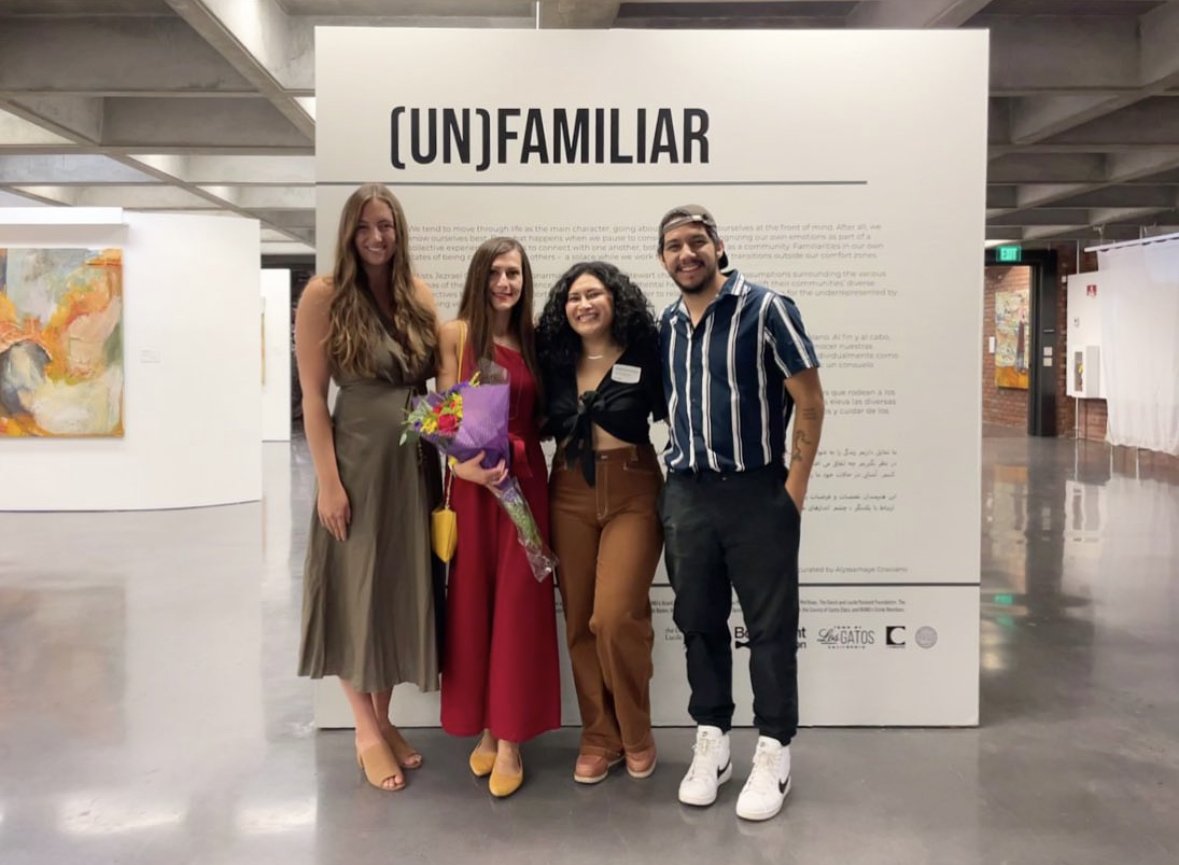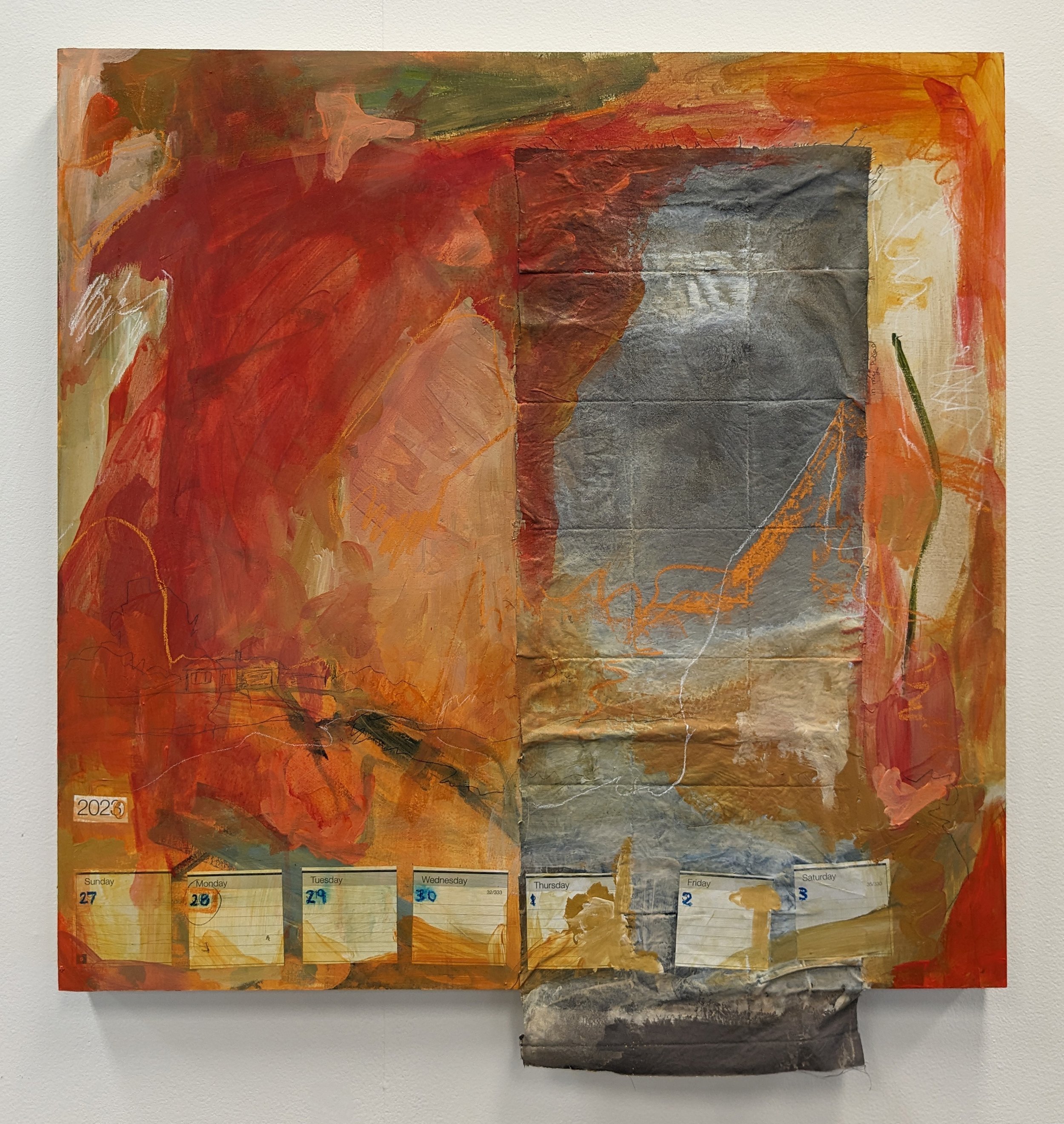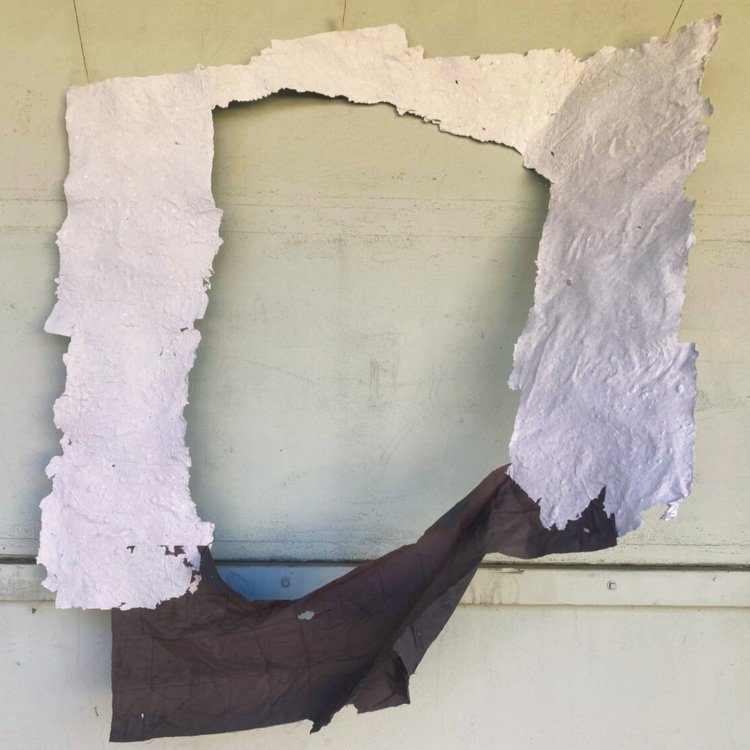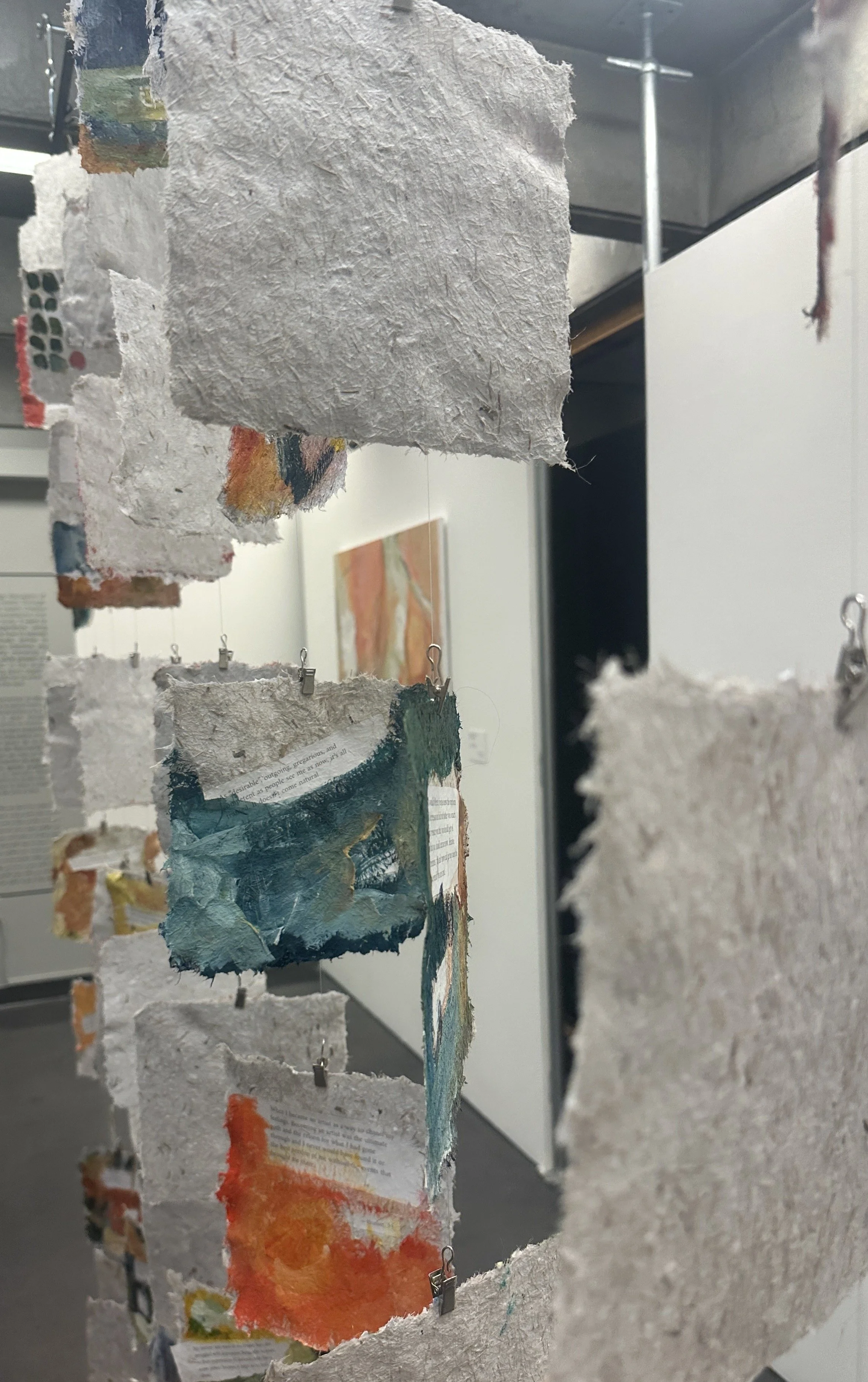Chelsea Stewart, What do you admire?/What do you wish people knew?/What do you admire? (2023), Handmade paper, community input
My artistic practice is a deeply personal one, inspired by the intricacies of composition, scale, narratives, and mental health. Through interdisciplinary mediums such as painting, papermaking, textiles, and a newfound interest in metals, I explore themes of mental health, family relationships, memories, and loss through abstract aesthetics.
My work is fueled by a multitude of sources, but at its core, it's about expressing the fragility and strength of the human experience. I draw inspiration from the erosion and decay of geological forms, the relationships I had with my grandmothers, how their passings have shaped how I look at life, how society looks at mental health, and how I experience my own mental health and memory.
One of the key drivers behind my art is the profound impact of witnessing my grandma going through experiences like anxiety and depression. As a kid, I was grateful to have the routine of having Sunday dinners, a large aspect of shaping me into who I am. This routine changed when my grandmother began experiencing depression again, something I didn’t realize or know about until I was a teenager. It was an eye-opening experience and something that began to shift me out of my childhood. Throughout high school and college, I experienced my own myriad of anxiety and learned to navigate it. After her passing in 2020, I realized how important it is to talk about these issues and to create and normalize dialogue within different age groups around these topics of anxiety and depression the best way I knew how, through art. These experiences have inspired me to create art that vividly portrays my own anxieties and ordeals in both 2D and 3D forms. The themes of being grounded in life and the fragile nature of our existence are central to my narratives.
In my installations and paintings, I intentionally choose materials such as paper and fibers. I find the repetitive and meditative process of making mesmerizing. When damp, the fibers are delicate and next to nothing, but when together, they are durable, strong, and can withstand more. Paired with the loose brushstrokes, they resemble childlike tendencies with intentionality, referencing an inner child’s actions and playfulness, while also searching for something. The act of creating art becomes a meditative process that mirrors the care and attention required for one's mental health. It's a juxtaposition of frustration, anger, and confusion that reveals itself through tangible forms, dissecting mental health through the technicalities of composition. Not only that, but the paper from which the homemade paper can be made is endless. I used torn-up self-help books in my pieces to help create the paper seen at NUMU. These self-help activity journals and books claim that they will “cure anxiety”, which I don’t think should be the case. Anxiety is something that can be worked with, not against.
The paper installation in the exhibition is one of my favorite pieces, each individual response comments on how they think of their mental health and what it means to them. How do they think of their mental health as a superpower, what do they wish people knew about their experiences, and more. I loved getting to know people through their responses and seeing how people can change the way of thinking about their mental health experience. For me, when I get anxious, the best thing I can do is talk to my close friends and family and make it known that I am currently not 100% and that I need support or relatability. Everyone is going through something hard, something that they need community in, and something that they need to talk about, no matter the age, gender, sexuality, or background and it's important to normalize conversation around these topics of mental health.
A second piece I am proud of in the exhibition is Routine. This piece was one that came later in the body of work, focusing on that missing link of the routine after the passing of my grandmother, the day that is marked on the piece. The routine of seeing them every week began to shift, the routine of going out to dinner at Marie Callender's, family dinners, and growing up, the shift was something that I had to get used to. The house drawn in the work is a rendering of my grandmother’s house, the one we would see each week. The use of the warm tones in my pieces is a color I am naturally drawn to, reminding me of the color of rust and warmth and golden hour. In the South Bay, the deep golden hour hues are something that amaze me every time I am here, and I also find the color of rust interesting, a marking of time gone by, or erosion.
What is next you ask? While I continue through my graduate program at San Jose State, I am working more within fibers and textiles and my newfound medium of metal casting. A lot of my current work is now focusing on the idea of loss and decay, through sculptural processes. Stay tuned!
About Chelsea
Chelsea Stewart is based in San Mateo County, CA, Stewart is pursuing her MFA in Spatial Arts at San Jose State while also working as the Gallery Manager at the Pamela Walsh Gallery in downtown Palo Alto. In her free time, she likes volunteering at Art in Action, a fantastic non-profit art organization based in Redwood City, paddling, or spending time with family and friends.
Image by Bryn Power Photography
Written by Chelsea Stewart, exhibiting artist in NUMU’s 2023 exhibition, (Un)Familiar.








